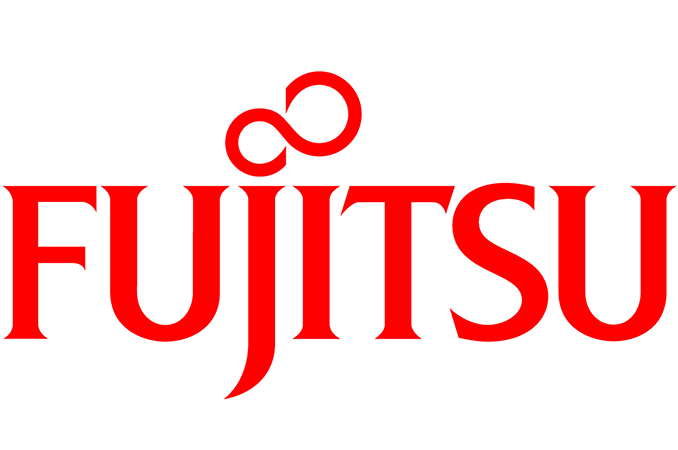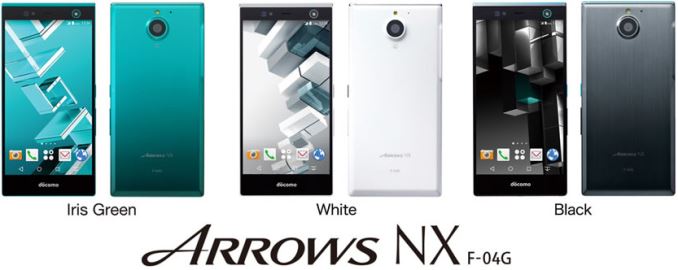Fujitsu Spins Off Smartphone and PC Divisions
by Anton Shilov on December 30, 2015 2:00 PM EST- Posted in
- PCs
- Smartphones
- Fujitsu

Tough times in the industry can require companies to make tough business decisions. This month Fujitsu announced that it would spin off its personal computer and smartphone operations into separate wholly-owned subsidiaries. Fujitsu will continue to own the aforementioned business entities, but wants management of the new companies to be fully responsible for their business results. While the move may make sense from financial point of view, it has the potential to be difficult for each business unit to build a unified brand once they are separated.
Throughout Fujitsu's 80-year history, the firm (like many others) has invested tens of billions in research and development of new technologies and continues to be a major R&D powerhouse. Fujitsu produced Japan’s first mainframe computer in 1954 and subsequently became one of the largest makers of personal computers, together with Siemens. The company remains one of the globe’s biggest IT companies by revenue, but as the IT business has changes, Fujitsu is transforming like many others. Today, the most important parts of the company’s business are IT services, technology solutions, IT consulting and telecommunications. Personal devices, such as smartphones, PCs and others, remain an important part of Fujitsu’s operations, but at this point in time the company believes that it makes sense to spin them off.
Starting from February 1, 2016, Fujitsu’s PC business will be officially called Fujitsu Client Computing Limited, whereas the smartphone subsidiary will be called Fujitsu Connected Technologies Limited. Both newly formed companies will issue 8,000 ordinary shares, which will belong to Fujitsu. Both subsidiaries will receive the assets, liabilities, contractual status, and other rights and obligations concerned with their businesses. Fujitsu will formally invest ¥400 million ($33.206 million) into each of the newly established units.
As with most company splits, Fujitsu is also announcing the revenue each new subsidiary would have generated had it been a separate entity beforehand. Fujitsu Client Computing Limited would have had revenue of ¥303.3 billion ($2.5178 billion) in FY2015 (ending in March 2015), which indicates that would be a a big supplier of PCs and tablets. Total assets that the new subsidiary will get from its parent are worth around ¥26.1 billion ($216.66 million). Earnings of Fujitsu Connected Technologies in FY2015 totaled ¥157.1 billion ($1.304 billion), and the subsidiary's assets will worth ¥11.9 billion ($98.787 million).
Fujitsu has said that desktop and notebook PCs, as well as smartphone products, are facing ongoing commoditization, which makes it increasingly hard to differentiate own brand products and compete against global manufacturers. The company indicated that splitting PC and smartphone units from the parent would create two integrated systems “covering all aspects of research, development, design, manufacturing, sales, planning, and after-sales services”. Besides this, the plan will help to “clarify management accountability” should aid Fujitsu to enable management decisions quicker than before, and the goal being to increase efficiency.
While certain companies can operate more efficiently when independent rather than as parts of huge conglomerates like Fujitsu, it is also clear that Fujitsu Client Computing and Fujitsu Connected Technologies will be considerably smaller than their key rivals on the PC and smartphone markets (e.g., Apple, Dell, HP, Samsung, etc.). At present, one of the plus points Fujitsu likes to promote are their in-house unique technologies - under the new system, implementing these might increase the red tape and financial agreements between the R&D side as the projection side. However, once Fujitsu’s PC and mobile subsidiaries are independent, it will be easier for the parent company to find new partners, establish joint ventures or simply sell the subsidiaries should the need arise.
It is noteworthy that while Japanese companies like Sony and Fujitsu are splitting their PC and smartphone businesses, whereas U.S.-based Apple, Microsoft and Google view rich ecosystems of devices as their competitive advantages. Spinning off or selling commoditizing businesses units is not something unusual for Fujitsu. The company used to produce its own hard disk drives, but sold the operations to Toshiba back in 2009. Fujitsu also sold its microcontroller and analog business to Spansion in 2013.
Source: Fujitsu












30 Comments
View All Comments
alexvoda - Thursday, December 31, 2015 - link
Don't forget NEC. I think they still make smartphones. They also make some of the thinnest ultrabooks. The Lavie series.Michael Bay - Saturday, January 2, 2016 - link
My first notebook was Fujitsu-Siemens, and it was okay.ET - Thursday, December 31, 2015 - link
I still have my Fujitsu P1510D. That was an amazing little convertible for the time. I recently tried to install Windows 10 on it, but unfortunately there are no WDDM drivers for Intel 915, so that killed that prospect.sna1970 - Friday, January 1, 2016 - link
any one who wants to buy japanese phones can visit this sitehttp://www.kyoex.com/categories/Shop-Smartphones/F...
Osamede - Friday, January 1, 2016 - link
The Sharp Actius series of laptops was surely the template for the "MacBook Air". I believe there is no way that Jobs and the other top techies at Apple didn't own and use these back in the day. Any ultraportable enthusiast had these.I dont think Fujitsu had any laptops below about 13" but the ones they had at that 13"-14" size were the lightest. They were sold in the US for sure. Both directly and via a few retailers. But Fujitsu was certainly big n the industrial sector in the US for tablets (running Windows CE, if I recall correctly), well before Ipad existed at all.
Osamede - Friday, January 1, 2016 - link
The Sharp Actius series of laptops was surely the template for the "MacBook Air". I believe there is no way that Jobs and the other top techies at Apple didn't own and use these back in the day. Any ultraportable enthusiast had these.I dont think Fujitsu had any laptops below about 13" but the ones they had at that 13"-14" size were the lightest. They were sold in the US for sure. Both directly and via a few retailers. But Fujitsu was certainly big n the industrial sector in the US for tablets (running Windows CE, if I recall correctly), well before Ipad existed at all.
Osamede - Friday, January 1, 2016 - link
I would dispute your recollection on the laptops at least - they were top not and fairly advanced. In the early 2000s the lightest and highest resolution 13" and 14" laptops were actually made by Fujitsu (and Sharp as well). I owned a few of these.They were available for sale to consumers directly from Fujitsu USA online and also via PortableOne and Dynamism, although Dynamism was importing them. You could also get them at some of the niche computer retailers (ie brick and mortar shops).
Teknomaster909 - Saturday, January 2, 2016 - link
FUJITSU IS A PWERHOUSE SUPPLIER OF MAJOR RETAIL COMPUTERS/POS SLICES AND POS IT SERVICES AS WELL AS ENTERPRISE. FROM STARBUCKS TO ROSS AND RALPHS AND BLA BLA ETC... THE CONSUMER IS NOT THE ONLY MARKET OUT THERE.. THERE IS ALL SORTS OF BUSINESS THAT NEED TECHNOLOGY AND SERVICES AND THATS A HUGE PART OF FUJITSU HERE IN AMERICA AND EUROPE. THEY ALSO HAVE A GINORMOUS R&D. SUPER COMPUTING & INOVATING AND EVOLVING TECHNOLOGIES LIKE FIBER OPTICS.. THE ENGINEERING ON THERE PCS FOR LARGE CORPERATE ENTITIES ALSO IS ONE OF THE MOST EFFICIANTLY ENGINNEERED FOR FAST AND EASY FIELD ENGINEERS TO SERVICE.. WHERE DO U GUYS LIVE? UNDER A ROCK?Coup27 - Saturday, January 2, 2016 - link
lol... so true. Although the use of caps was probably not necessary.Fujitsu sell a lot of laptops, desktops and servers here in the UK market. We have a small Fujitsu server at work and it's incredibly well built and engineered.
Regardless where some individuals live, this site overall is too biased towards America. I know it does have European writers, but the site is too weighted to America. Maybe it should consider an Asian based writer to give some global balance?
phoenix_rizzen - Wednesday, January 13, 2016 - link
My favourite pointing device on a laptop was on my Fujitsu Lifebook 765dx, back in 1998-ish. Wasn't a trackpad, wasn't a trackpoint, wasn't a ball. It was, basically, a thumbpad from a game controller, with two mouse buttons underneath. You could rest your index finger (and your middle finger for better control) on it, which let your thumb naturally rest on the left mouse button. Then just move your finger around like on a joystick to move the mouse; how hard/far you press in a direction translated into how fast the mouse moved in that direction. Because of it's size, it was a hell of a lot easier to use / more accurate than the annoying Thinkpad nipple. Nobody else used that pointing device, and Fujitsu eventually stopped using it.Really miss that, especially on smaller devices like netbooks / tablet keyboards.